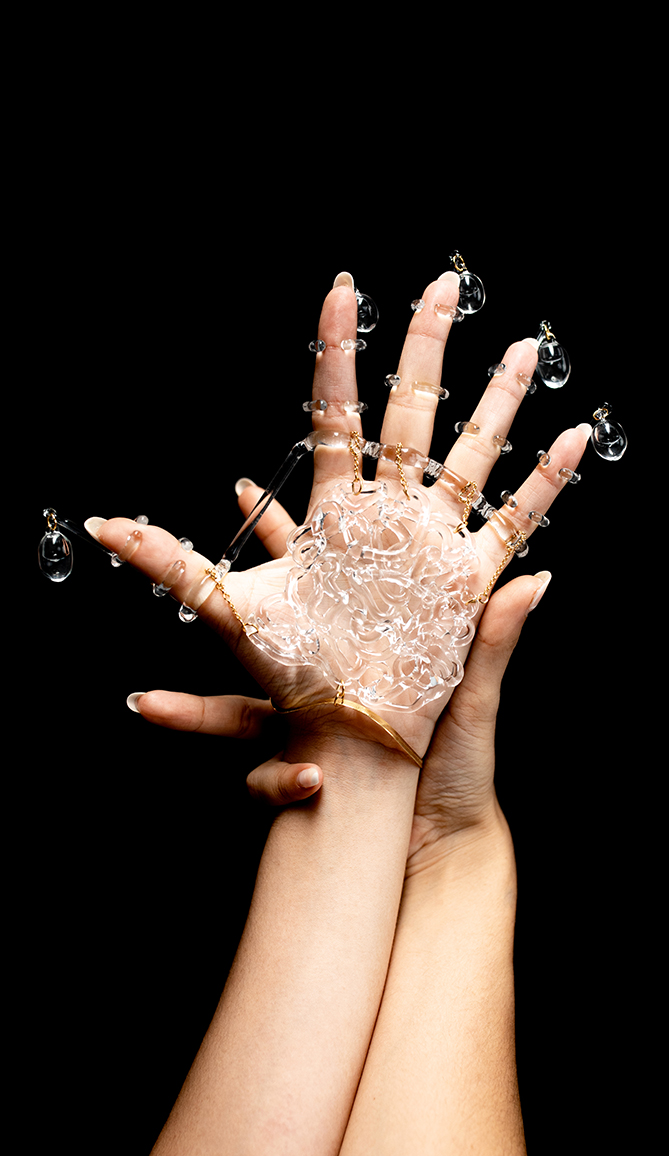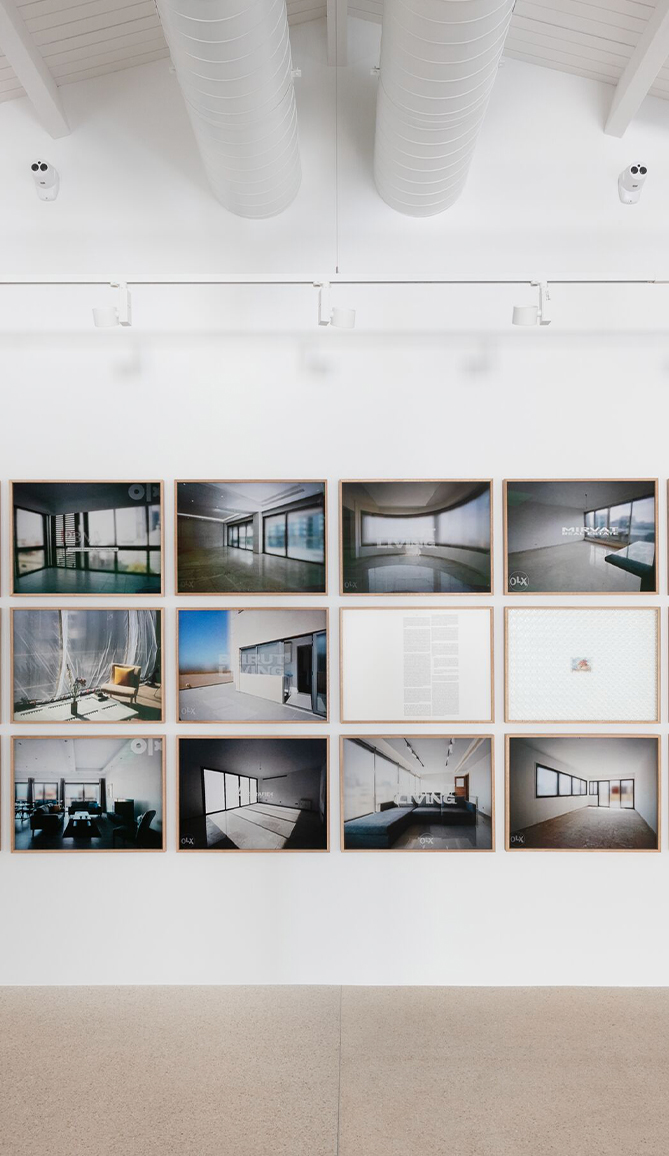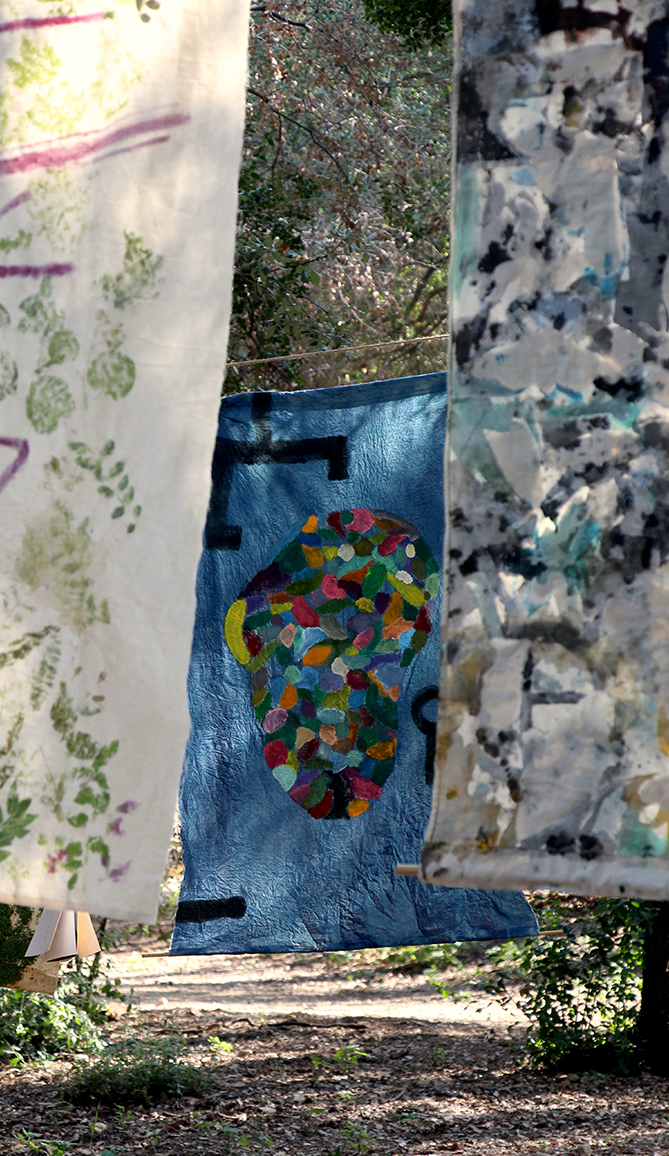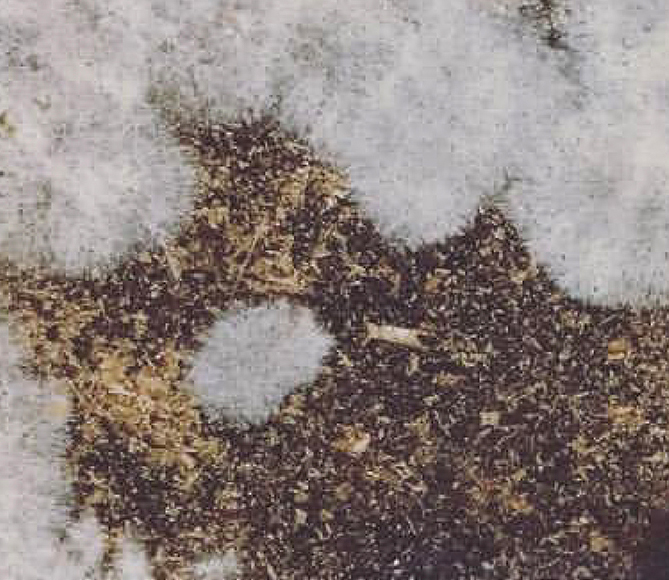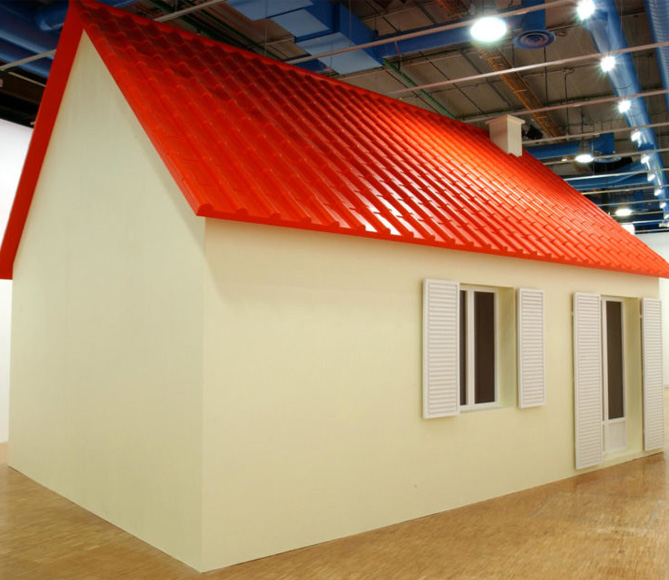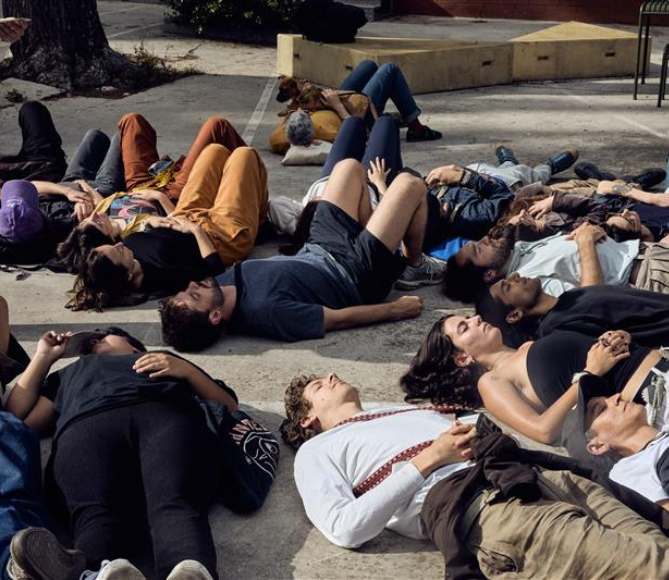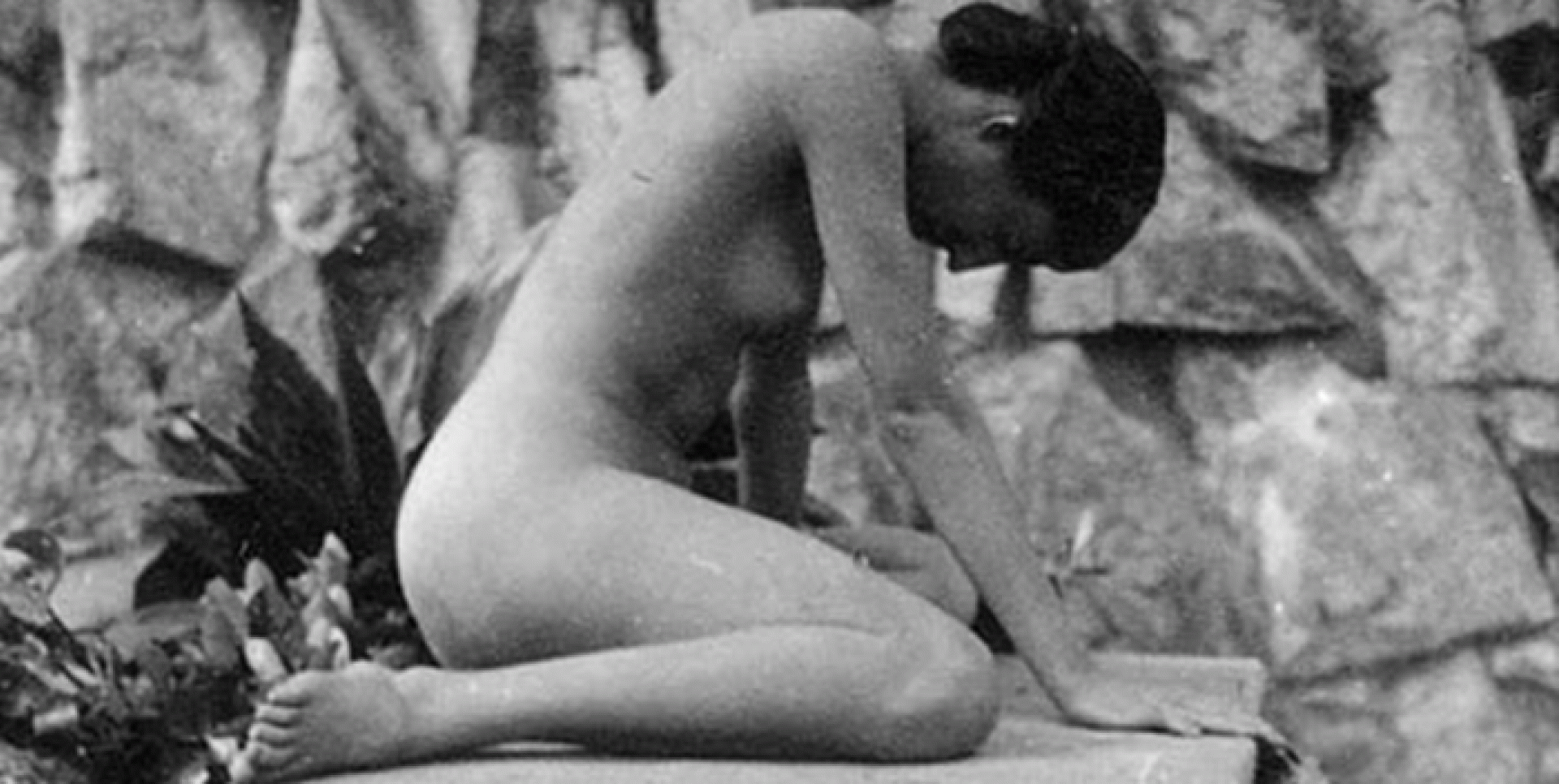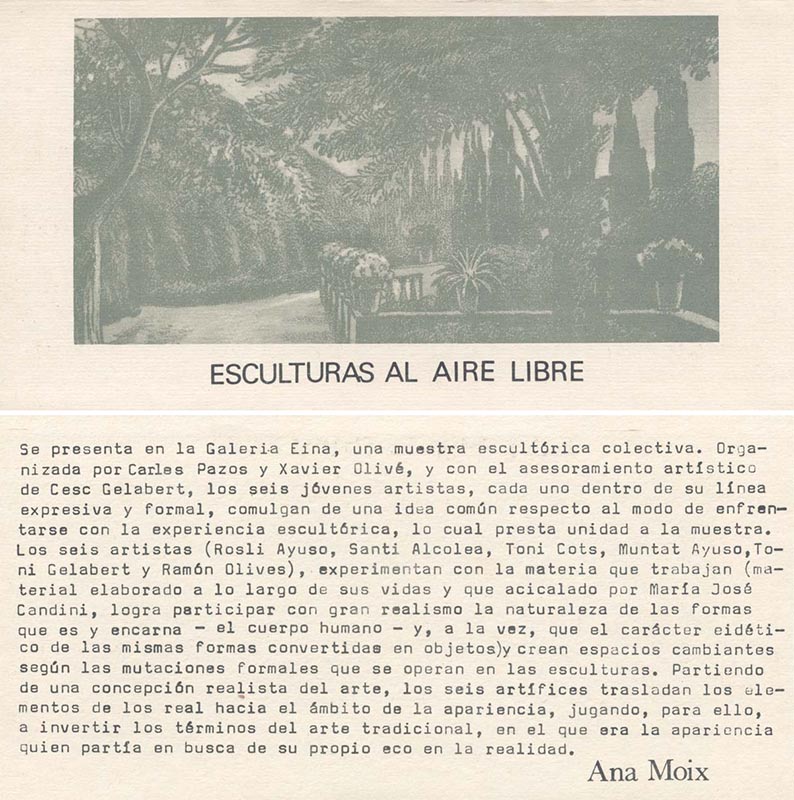Continuing in the wake of the previous Sculpture models (1974) by Carlos Pazos and Dante’s dream (1975) by Pazos and Xavier Olivé, Open-air sculptures proposes an action that could be framed within the so-called body art, where artist, subject, model and work are confused in a single reality in which we experiment with the limits between art and life (Cirici, 1977).
The action begins with the invitation to the event, where Anna Maria Moix, using the ridiculous language of art criticism of the day, invites guests to the opening of a group exhibition of sculptures by six young artists (the actors), indirectly alluding to the use of their own bodies as sculptural material.
The hour-long session starts in the evening. The public accesses the garden in small groups of between six and ten people, while the natural sounds of the garden (birdsong, breeze, frogs, etc.) are reproduced and amplified. Bringing this idea to life includes the collaboration of actors Santi Alcolea, Rosli and Muntat Ayuso, Toni Cots, Toni Gelabert and Ramón Olives as sculptures who, made up to imitate marble or terracotta, adopt different poses typical of Classical and Romantic aesthetics on the respective pedestals. The men imitate David by Verrocchio, a character with a tunic and a primitive man leaning on a stick; the women imitate Eriksen's Little mermaid, Grief by Josep Llimona and The Mediterranean by Maillol (Parcerisas, 2007). To achieve complete immobility, the actors received advice from dancer and choreographer Cesc Gelabert.

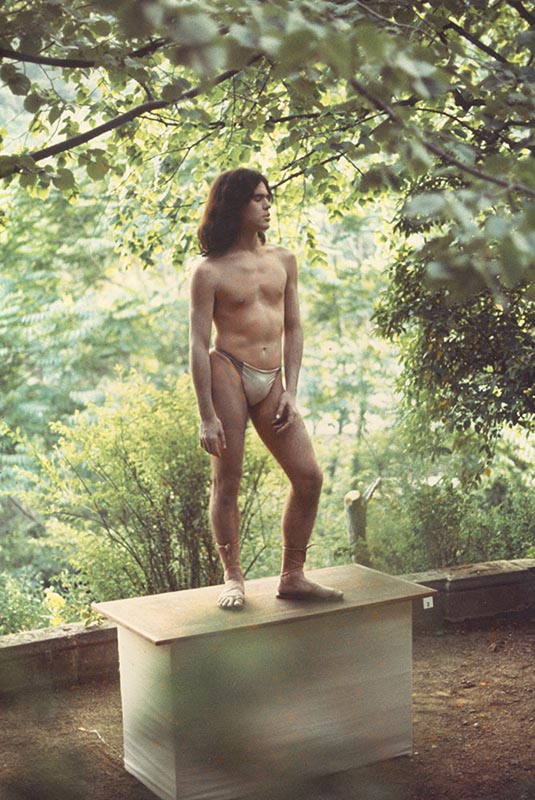
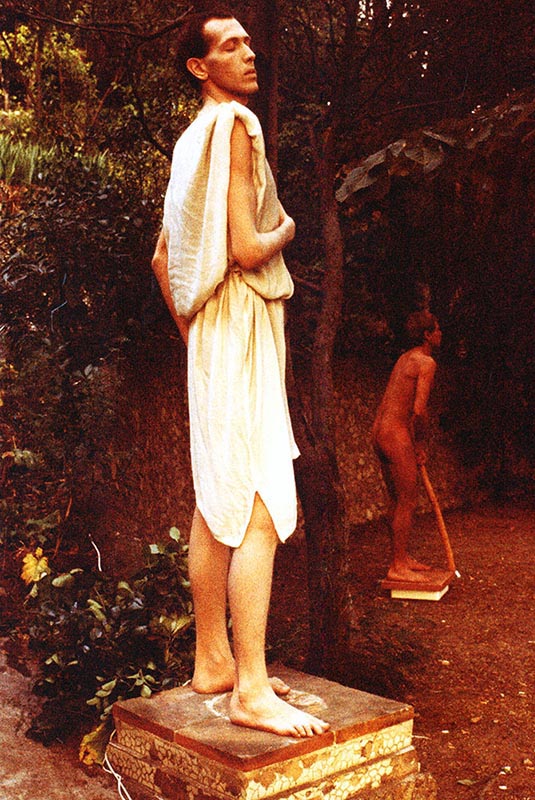
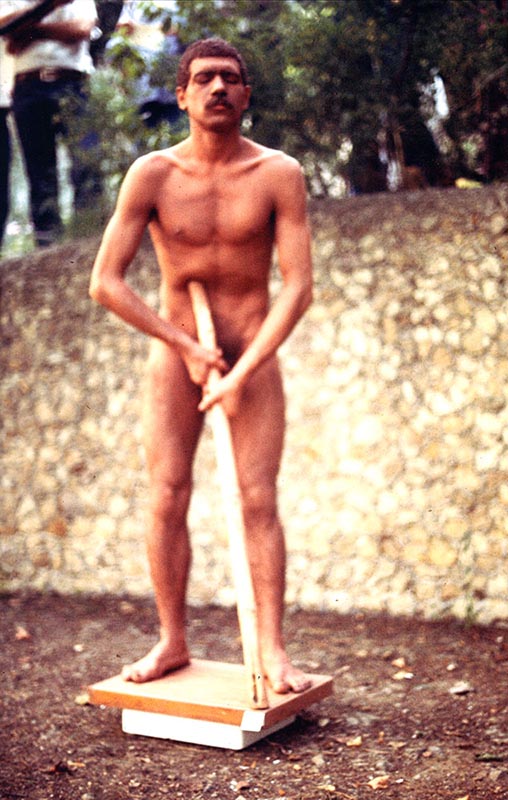
According to Cirici (1977), the experience will mean a “faithful transcription of sculptural language to the language of objective reality [...], as the work is the position of the model”. For Ràfols (1976), the action proposes researching the reaction that occurs when the traditional relationship between life and art – seen as the imitation of life – becomes the relationship between art and the imitation of the imitation of life. A play on symmetries where the limits between life and art are blurred, or rather moved, given the sensation of ambiguity that occurs in the viewer, who does not know whether the works are positioned before the art to be models of possible sculptures, or if they are works about to come to life (Domingo, 1975). In this sense, the bodily mastery of the actors and the make-up imbue the action with a realism that serves to bring these two conflicting realities even closer to each other. It is equally ambiguous that even though Open-air sculptures will become what is considered to be an action that is critical of the immutability of the relationship between life and art and conventional artistic structures, it remains within the domain of experimentation and artistic production, becoming a clear reference to the conceptual art of the 1970s.
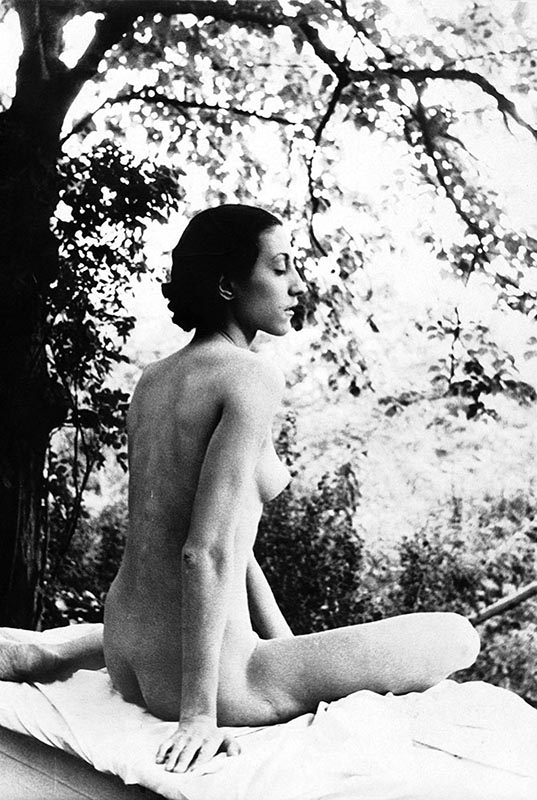
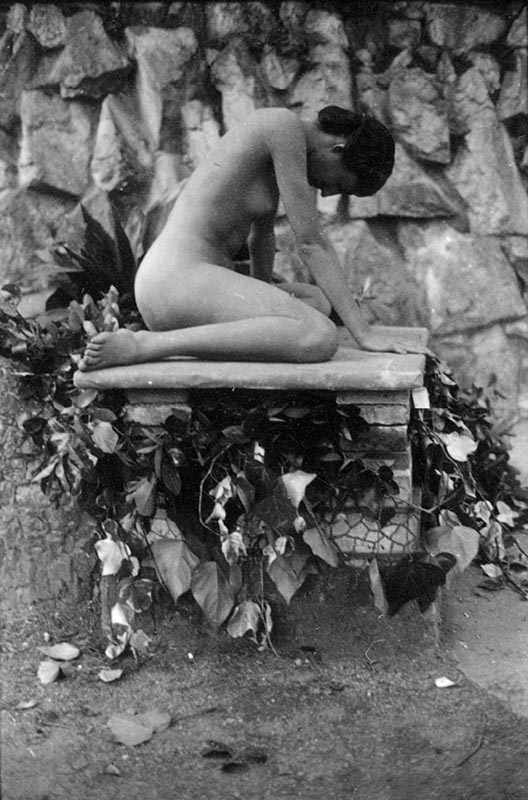
Technical data
- Idea: Xavier Olivé i Carlos Pazos.
- Sculpture: Santi Alcolea, Rosli Ayuso, Muntat Ayuso, Toni Cots, Toni Gelabert and Ramon Olives.
- Advice: Cesc Gelabert.
- Makeup and hairdressing: María José Araujo.
- Sound: Francesc Martí.
- Place: Garden of EINA.
- Date: 26 June 1975 from 20.30 to 21.30.
Appearance in the media
- Cirici, Alexandre. "Transcripcions de Pazos i Olivé". Serra d'or. Any XVII, núm. 195 (des. 1975), p. 99-101.
- Cirici, Alexandre. "EINA fa deu anys". Serra d'or. Núm. 208 (1977), p. 43.
- Combalía Dexeus, Victòria. "Les avant-gardes en Espagne". Art press (janv./févr. 1976), p. 26-27.
- Domingo Barnils, F. “Esculturas al aire libre”. Artes plásticas (1975), p. 15-18.
- “EINA, experimentación escultórica”. En: Diario de Barcelona. Circuito cero (jul. 1975).
- Moix, Anna María; Casas, Carme. “Cartas envenenadas”. Tele/eXpres (junio 1975).
- Suárez, Alicia; Vidal, Mercè. “Art. Noticiari”. Serra d'Or. Any XVII, núm. 191, (agost 1975), p. 53-54.
References
- Dorfles, Gillo. Últimas tendencias del arte de hoy. 5ª ed. amp. y act. Barcelona: Labor, 1976. "Cap. XI. Arte conceptual", p. 153.
- Parcerisas, Pilar. Conceptualismo(s): poéticos, políticos, periféricos: en torno al arte conceptual en España, 1964-1980. Madrid: Akal, 2007.
- Rafols Casamada, Albert. “Escultures a l’aire lliure”. Num. 2 (des. 1975).
Text: Rubén Alcaraz and Xavier Olivé.
 La Sirenita
La Sirenita
 La Mediterránea
La Mediterránea
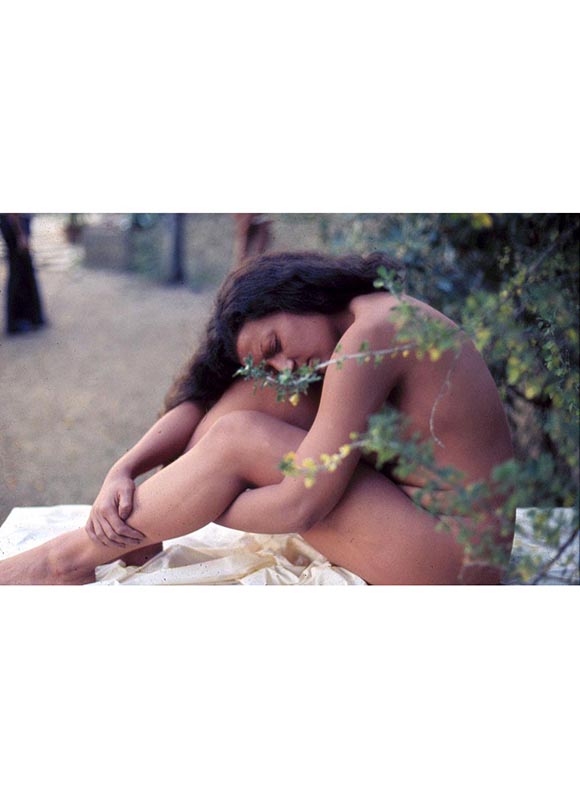 El desconsuelo
El desconsuelo
 El David de Verrocchio
El David de Verrocchio
 Un hombre con túnica
Un hombre con túnica
 Un hombre primitivo con bastón
Un hombre primitivo con bastón
